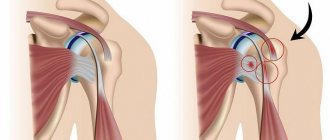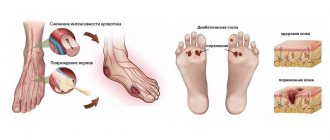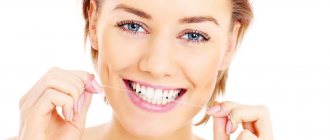Tooth structure
The oral cavity is an almost autonomous and self-sufficient system that provides protection and nutrition to the teeth. A tooth consists of several components. Root, neck and crown. The crown, in turn, consists of pulp, dentin and enamel.
The enamel covering the crown of the tooth is the hardest tissue in the tooth, and indeed in the entire human body. Enamel covers teeth unevenly. The hardness of enamel is only 5 times less than quartz.
The microscopic structure of the outer covering of the tooth is very complex; it consists of millions of enamel prisms. In terms of chemical composition, enamel contains 97% mineral salts and 3% organic substances. The next deeper layer is dentin, which forms the base of the tooth.
The mineral content in it reaches 75%, which is:
- calcium phosphate;
- calcium fluoride;
- calcium carbonate;
- magnesium;
- sodium.
25% are organic substances:
- collagen;
- mucopolysaccharides.
Another substance that makes up the tooth is cement. It structurally resembles bone, consisting of calcium salts and collagen fibers. Cement comes into contact with both dentin and enamel.
Enamel is nourished by diffusion, since there are no vessels in it.
In young children, the enamel of newly erupted teeth is covered with a thin cuticle, which is very resistant to acids. This thin natural shell quickly wears off when chewed. With age, another organic shell is formed on the surface of the tooth - a pellicle, which consists of glycoproteins and is selectively adsorbed from saliva.
The appearance of teeth is often used to judge a person's overall health. Agree that it is difficult to associate a person with dark yellow teeth and black spots with a successful and healthy personality. Before thinking about the whiteness and cosmetic appearance of teeth, pathologies that can lead to unsightly teeth should be diagnosed and treated.
Dental diseases
It must be remembered that teeth belong to the digestive system, so the appearance and health of teeth is affected by the condition of the entire system. At least once in a lifetime, every person has experienced toothache; this type of pain is considered one of the most severe pain sensations. Here are some fairly common dental diseases:
- Tooth abscess - popularly this disease is called gumboil. This is an acute source of inflammation caused by bacterial flora. It looks like a sac with purulent contents. The gum mucosa becomes inflamed, and sometimes in severe cases, the surrounding tissues become swollen and inflamed. The disease is accompanied by pain and general malaise. This process occurs as a complication of dental caries, tooth trauma, and periodontal disease. The method of treatment is surgical - opening and draining the abscess.
- Hyperesthesia is painful sensitivity of the teeth due to a violation of the integrity of the enamel, abrasion of the enamel with age, excessive whitening or violation of the technique of dental manipulations. It manifests itself as acute pain or discomfort when eating hot or cold, sour, salty. These unpleasant sensations are one of the first reasons for visiting a doctor.
- Tartar is a plaque on the surface of teeth that mineralizes over time. It looks very unaesthetic in the form of a dark brown border at the root of the neck of the tooth. If the disease is not treated, it can lead to loosening and tooth loss. The causes are violation of the regularity and technique of oral hygiene. The problem can be eliminated in the dentist's office by mechanical teeth cleaning.
- Dental caries is demineralization and destruction of tooth enamel under the influence of external factors. At first, the pathology appears as a dark yellow speck, then, as the process progresses, blackening and destruction of enamel and dentin occur. The advanced form of the disease is characterized by penetration of the process into the pulp. It is necessary to fight the disease as soon as the first signs appear, otherwise the consequences of caries can be very dire.
- Periodontitis is an inflammation of the soft tissues surrounding the teeth. If the process is prolonged and untreated, the tooth begins to become loose and may fall out; this will be caused by the loss of the tooth root with a bone hole in the jaws.
- Periodontal disease - Unlike the previous disease, periodontal disease is dystrophic changes in the periodontium. The cause of dystrophy, and then atrophy, is chronic metabolic disorders of the body, such as diabetes mellitus, long-term infectious chronic diseases or hereditary factors. In this case, there is no inflammatory component. At the end of the disease, tooth loss becomes inevitable.
- Amelogenesis imperfecta is a disease caused by genetic disorders. Appears with the first eruption of teeth. Pathology includes disruption of the formation of dental bone tissue. Mineralization occurs with significant disturbances and is manifested by erosion. Small cavities in the tooth tissue. With early treatment and treatment, cosmetic defects can be avoided.
- Pulpitis is an inflammation of the neurovascular bundle of a tooth that occurs as a result of complications of caries or tooth trauma. When dentin is exposed and irritating factors and microorganisms enter, inflammation occurs. The disease occurs with severe pain.
- Erosion of tooth enamel is a non-carious disease that manifests itself as round-shaped defects and dark spots. As a rule, the buccal and frontal surfaces of the teeth are affected. The cause of the pathology is endocrine and metabolic pathologies.
Causes of discoloration of tooth enamel
The main reasons for darkening of teeth and an unsightly yellowish tint to the enamel are:
- Food - coffee, black tea, cola, red wine, other fruits and vegetables (apples, potatoes, mulberries, blackberries). These products change the color of teeth when used regularly by penetrating pigments into the enamel.
- Smoking. Regular smoking of tobacco contributes to the deposition of yellow pigment on tooth enamel. In addition to a cosmetic defect, tobacco smoke changes the composition of saliva and reduces local immunity, which stimulates the proliferation of pathogenic bacteria in the oral cavity.
- Excessive consumption of simple sugars. Lovers of sweets and baked goods should be prepared for the fact that sooner or later their teeth will acquire a yellowish tint. The fact is that microorganisms that live in abundance in the mouth begin to actively multiply and grow in the nutritious, fertile soil of carbohydrates. Microbial metabolic products thin and destroy the enamel, exposing the base of the tooth, dentin, which is naturally yellow.
- Use of certain medications. If a pregnant woman took tetracycline or doxycycline while carrying a child, then there is a high probability that the enamel of the newborn will be dark yellow when teething.
- Excess fluoride. People whose bodies have been exposed to excess fluoride for a long time may notice yellow spots on the outer surface of their teeth. This disease is called fluorosis. Excessive amounts of this chemical compound can appear in industrially polluted settlements.
- Congenital malformation of teeth or so-called hypoplasia is manifested by whitish-yellow specks, which appear as round identical spots symmetrically located on the teeth of the same name.
- Diseases. Tooth enamel may change color after treatment of malignant tumors with radiation therapy in the head and neck area. Inflammatory processes in the stomach, some viral infections, carbohydrate metabolism disorders, anemia.
- Dental materials used for fillings, namely those containing silver sulfides, can give the tooth a dark gray color.
- Natural reasons. With age, the enamel wears away and exposes yellow dentin.
- Hereditary factor. The color of enamel and the health of teeth largely depend on genetics and the color of enamel in parents.
- External environment. Increased levels of heavy metals in water or in the workplace. Excess fluoride in water or in mouthwashes, toothpastes or dietary supplements.
Essential vitamins for tooth enamel
Without these beneficial substances, teeth will never be healthy. Vitamins are needed to nourish bone tissue and dental nerves, regulate metabolic processes, and protect enamel from external factors. The most useful vitamins and microelements that the body requires for enamel regeneration are:
- Calcium. Building material for all bone tissues of the human body. The strength of tooth enamel also depends on it.
- Phosphorus. Promotes tooth growth, strengthens enamel and gives it a snow-white appearance.
- Vitamin D. Combined with calcium, it strengthens teeth and enamel in particular.
- Vitamins B. Have a comprehensive strengthening effect on tooth enamel.
- Vitamin A. Prevents the appearance of roughness and damage to tooth enamel.
Oral and dental hygiene
Before resorting to active whitening of tooth enamel, you should pay attention to the need to strictly maintain cleanliness of the oral cavity every day. How to make teeth healthy is something we should know from early childhood.
A wide range of products for cleaning the surface of teeth, tongue and soft tissues, which allows you to choose the most optimal and convenient method for implementing everyday hygiene procedures. Such skills and habits must be developed from early childhood to improve dental health. Daily brushing of teeth and removal of soft plaque promotes healthy teeth.
Mechanical cleaning with toothbrushes is the most popular method, which has proven itself to be the most effective, and gum massage improves blood supply to the teeth and periodontium. Types of brushes differ in size and shape of the working surface, handle, density and direction of the fibers. Different types of bristles are used for toothbrushes:
- Natural bristles (has a number of disadvantages due to the presence of a channel filled with microbes, it is difficult to keep clean, and it is not possible to achieve the desired stiffness).
- Synthetic fibers (nylon, setron, perlon, dederlon, polyurethane).
Recommendations regarding which toothbrush hardness to choose depend on the individual condition of the teeth and periodontium. There are several types of toothbrush hardness, ranging from very hard to very soft.
Children are recommended to use brushes with soft and medium bristles to prevent premature wear of the enamel that has not yet strengthened. Hard and very hard brushes are acceptable for people with healthy teeth, only if used correctly.
Dentists never tire of developing new and increasingly effective methods for cleaning dental surfaces. It is possible that many of us had no idea about the abundance and variety of methods of mechanical teeth cleaning:
- Fones circular method - first, the teeth are closed, cleansing is done in a circular motion, the internal surfaces are also cleaned in a circular motion.
- Leonard method - the toothbrush is installed perpendicular to the surface of the teeth, and the movement is made in the direction from the gum to the crown.
- Bass method - the working part of the brush is set at an angle of 40 degrees to the tooth axis. At the same time, they press firmly onto the enamel and treat the teeth with vibrating movements of small amplitude. Thus, the fibers penetrate between the teeth. The method is quite complex, so it is indicated only for adults.
- Charters method - set the brush at an angle, so that the ends of the fibers touch the outer surface of the crown, up to the cutting edge.
- Standard method of Pakhomov G.N. — the oral cavity is conventionally divided into several segments. Cleaning begins from the upper jaw, moving from segment to segment. The lower jaw is cleaned in the same way. When cleaning the inner and chewing surface of the tooth, the brush is placed at an angle and moved from the gum to the tooth.
Toothpastes and powders have a number of positive qualities that allow you to clean, polish your teeth and partially deodorize the oral cavity. These effects are achieved by a composition based on abrasive substances. The main components of toothpastes:
- abrasives;
- foaming agents are safe for the human body and do not cause irritation;
- additional substances - fluorine compounds, vitamins, microelements, extracts of medicinal herbs.
Floss or dental floss - designed to remove soft plaque, mainly in hard-to-reach places between teeth. This is a thread up to 40 cm, which is wound around the fingers, pulled and carefully made movements, trying not to damage the soft tissue of the gums. Regular use of floss prevents the appearance and development of caries. The only drawback is the high risk of gum injury, so dental floss is not recommended for use by children.
Chewing gum - used to keep the mouth clean, due to increased salivation and washing away plaque from the teeth. Many chewing gums recommended for daily use after meals contain xylene, a sweetener that has a beneficial effect on teeth, preventing the occurrence of caries. Chewing gum should not be chewed for more than half an hour, the gum should not be swallowed, and the gum should not be used too often.
Strengthening enamel and teeth
It is not easy to damage enamel - it mainly occurs as a result of carious processes or mechanical stress (for example, when choosing a toothbrush with hard bristles or abusing whitening procedures at home), with a lack of vitamins or the wrong food, with immune or endocrine disorders of the body. There is also the concept of “hypoplasia” - this is a congenital anomaly in which there is the presence of very thin enamel or its complete absence.
Strengthening teeth is possible both at home and in a dental office. However, there is one condition - only a doctor should prescribe treatment. Specialists at the Smile-at-Once center conduct a thorough diagnosis of the condition of the patient’s tooth enamel, identify the causes of the problem, and then draw up a treatment plan - as a rule, it includes procedures that are carried out in the clinic, as well as measures that the patient himself must carry out during treatment. at home.
How to whiten your teeth
Before resorting to teeth whitening, at home or in a specialized clinic, you need to make sure that you have no contraindications to these procedures.
You should not whiten your teeth if:
- teeth are too sensitive to temperature changes and strong tastes;
- if you have fillings in exposed areas, they will become more visible with bleaching;
- allergic reactions to dental materials or hydrogen peroxide;
- caries and other dental diseases;
- pregnancy and lactation;
- if you are taking medications;
- too young age.
Nutritional features for strong teeth
Some foods are good for the strength of the tooth surface, but some are very dangerous. Let's take it in order, but first let's talk about products that destroy the shell:
- sweets with a lot of sugar;
- sour foods, including citrus fruits, as well as natural orange juice;
- soda;
- alcohol, cigarettes;
- seeds and nuts - if you bite them with your teeth, then the coating will wear off and become damaged, but you will have to think about how to strengthen the damaged and worn-out tooth enamel.
Of course, this does not mean that every product listed should be excluded from the diet forever. However, after each use, you should clean your mouth with special solutions and brush your teeth. And juices can be drunk through a straw to minimize the impact on the surface of the teeth.
Here's what helps strengthen the enamel:
- Water. You definitely need to drink it; it cleanses unwanted components from the oral cavity.
- Milk, dairy products, fermented milk products. This food is rich in phosphorus, calcium, and helps restore the normal process of salivation.
- Berries, strawberries with vitamin C, antioxidants.
- Greenery. Dill, parsley - help strengthen and also whiten teeth enamel at home, making your breath fresher.
- Yolk, fish, seafood. These products contain vitamin D, which has a beneficial effect on the condition of the shell of teeth.
- Cabbage, vegetable oil. These foods contain vitamin K, which is also good for oral health.
- Sesame seeds. They help eliminate bacteria that harm the integrity of the protective coating on teeth.
- Tea, specifically green tea, is beneficial for the health of the entire oral cavity.
Often, instead of thinking about how to strengthen tooth enamel at home, it is worth taking preventive measures in advance. Because properly established home care is even more than half the success.
Professional teeth whitening methods
Modern dentistry offers different methods of teeth whitening. However, there are a number of disadvantages. These are the duration of the procedures, the price and most importantly the consequences. Each method is dangerous with its own complications.
Basic methods of professional teeth whitening:
- Teeth whitening Air Flow - the essence of the method is to use a stream of air with water and fine powder, which under pressure removes tartar, plaque, and pigmentation from tobacco. If the enamel was naturally light in color, then this method helps remove endogenous pollutants for a long time. The disadvantage is possible thinning of the enamel and tooth hypersensitivity.
- Laser whitening is based on the activation of hydrogen peroxide by a laser. The procedure does not last long, the effect is immediate, and if the rules are followed, it can last for a long time.
- The ultrasound method is a lengthy procedure and requires several sessions to achieve results. The method is based on the action of a weak solution of oxidizing agents and ultrasonic waves.
- Photo whitening is a fairly new method of teeth whitening. The session lasts no more than 2 hours. The idea is that low concentration hydrogen peroxide is applied to the teeth and the teeth are illuminated with halogen light. As a result of a specific photoreaction, the enamel is lightened by several tones. The main disadvantages remain the high sensitivity of the teeth after the procedure.
Is it possible to have tea...
Often a similar question arises after the following situations:
- removal of a tooth;
- whitening;
- filling (installation of a seal);
- eruption
...after teeth extraction
Dentists warn that after you have a tooth removed, it is not recommended to drink or eat for 2-3 hours. If it is important for you to know the exact time, then the doctor is unlikely to help you in this situation. After all, every person is unique. And the formation of a blood clot in the hole directly depends on the coagulability of your blood.
Hot or even warm liquid negatively affects blood clotting. But this does not mean that after the specified time has passed, you should immediately brew some tea. At first, you should drink exclusively cold tea, which contains tannic acid, which has a beneficial effect on the healing process.
...after teeth whitening
To maintain the effect of whitening for a longer period, experts recommend a “white” diet. Any coloring food (including liquids) negates the effect of the procedure quite quickly. Therefore, if you value your money, you should not consume black tea, it is better to use green or white. But these varieties should also be included in your diet after 2 weeks in a limited amount.
Read also: Cyst under a tooth
...after filling
After installing the filling, it is not recommended to drink or eat for 2 hours. And in the first few days, in order to avoid staining the filling material, you should not drink a black drink, and it is better to drink green and white the next day.
...during teething
The tea drink does not have much effect on teething. Although green tea sometimes helps to soothe aching gums.
Teeth whitening at home
A fairly quick cosmetic effect can be obtained by using modern home teeth whitening products. How to whiten teeth at home:
Teeth Whitening Strips
The principle of operation is to apply a strip soaked in a special whitening liquid to the outer surface of the teeth every day for 30 minutes. The enamel brightens by 3 tones. The disadvantages of this method are inconvenience in use and lack of impact on the interdental spaces.
Whitening gels
This is a more aggressive method of enamel whitening and involves applying a special gel with a brush. There is no need to rinse off this composition with water; under the influence of saliva, the gel gradually dissolves. Another option is to squeeze a similar gel into a plastic tray that is placed on the upper and lower edges of the teeth.
A mouthguard is necessary for more intimate contact of the chemical with the surface of the teeth. The disadvantage of such procedures is thinning of the enamel and painful sensitivity of the teeth. The effect is quite fast and noticeable.
Whitening Pencil
This is a compact item containing whitening gel. In some cases it must be washed off with water, in others it does not require additional rinsing. A weak concentration of whitening agent does not affect heavily soiled teeth, but rather is intended to maintain the effect.
Whitening with hydrogen peroxide
Hydrogen peroxide is an affordable, cheap and quite effective way to combat plaque. This is the main ingredient of all whitening pastes and gels. Whitening at home is not difficult.
First you need to prepare an aqueous solution of 3% hydrogen peroxide. For this we take 250 ml. water and add 25 drops of peroxide to it. Then we clean the oral cavity with the usual toothpaste. The next step is rinsing your mouth with the prepared solution. After this, take a cotton swab and thoroughly wipe all accessible surfaces of the teeth with undiluted 3% hydrogen peroxide.
Rinse your mouth with water. It is recommended to carry out the procedure no more than 2 times a day. Do not try to achieve a positive result; by using the method more often, this risks burning the gum mucosa and thinning the enamel.
Teeth whitening with soda
Calcium carbonate is a finely dispersed substance that can remove soft plaque on teeth mechanically. Baking soda can be applied to a piece of gauze or toothpaste and clean the dental surfaces. The method is dangerous due to the high risk of thinning the enamel and damaging the gum mucosa. Baking soda should not be used too often.
Teeth whitening with activated carbon
This method is long, but quite effective. Activated carbon acts mechanically on the enamel, cleaning it from plaque. Take a charcoal tablet and grind it to a powder. Apply this powder to your teeth using a brush. It is important to grind it to a very fine state so that large fragments do not scratch the enamel.
Hydrogen peroxide and soda
You can enhance the effect of soda and hydrogen peroxide by combining these two substances. To do this, take a teaspoon of baking soda and add hydrogen peroxide, stir to form a paste. Brush your teeth with a brush for no more than two minutes. Afterwards, rinse your mouth. You can use this method of home teeth whitening no more than twice in seven days. The effect is noticeable after the first procedures.
Teeth whitening with lemon
Lemon contains a large amount of ascorbic acid. When applied to the tooth surface, it helps cleanse the enamel from pigment spots. Can be used in various ways. Either simply chew a slice of lemon with a crust, or drip lemon juice onto your toothpaste. A side effect may be tooth sensitivity, so use lemon for whitening with caution and not too often.
Treatment at the dentist's office
To restore tooth enamel, the patient may be offered the following treatment methods:
- Remineralization. With this method, a special plate is made, which is saturated with fluorine, phosphorus and calcium. The patient usually puts it on at night so that the teeth can be saturated with microelements. You can also use a thin film of hydroxyapatite, saturated with vitamins. This material is very durable and flexible. After it, the enamel becomes whiter and acquires shine.
- Simple fluoridation. This procedure is carried out using two methods. Teeth can be coated with a special varnish containing fluoride. This creates a dense healing layer on the teeth. This treatment is carried out in 3-4 courses. The second method of fluoridation involves making a special tray (mouthguard) based on an impression taken from the teeth. It is filled with a special paste or gel and placed on the teeth for 15 minutes. Such procedures require from 10 to 15. After this, the enamel is saturated with fluoride.
- Deep fluoridation. This procedure is carried out in several stages. Using professional cleaning, the doctor removes plaque and tartar from the tooth surface. Dries the teeth and coats them with a composition containing magnesium fluoride, which helps seal the enamel. The teeth are then coated with a layer of calcium and copper hydroxide. These two elements enter into a chemical reaction, forming calcium fluoride, the particles of which fill microcracks in the enamel, which significantly improves its condition.
- Enamel implantation. This method is used when the damage has a large area or the surface layer of the incisors needs to be restored. In this case, the teeth are coated with a substance similar to natural enamel. This is how teeth are restored at the molecular level. Teeth become healthy and white.
- Filling. To restore the enamel, they resort to unusual fillings. The filling material is applied layer by layer, as with extensions, and distributed evenly over the entire damaged surface. This fills all the cracks and reduces pain.
- Veneers and lumineers. These products are thin ceramic plates that cover all enamel defects, hide interdental gaps and incorrect positioning of teeth. In order to attach them to the tooth surface, the living teeth must be ground down. Fastening is carried out from the front side of the front teeth. Such structures can last up to 10 years. With such restoration, the smile becomes flawless. The difference between lumineers and veneers is that the former are thinner. They fit better to the teeth and require less grinding (sometimes just grinding is enough).
We invite you to familiarize yourself with Epulis on the gums: causes, treatment, photos.
Which of the listed methods will be used in a particular case depends on the degree of damage to the enamel, the condition of the gums, the presence of bad habits and infections in the patient.
Strengthening gums and loose teeth with folk remedies
Strengthening teeth and gums with folk remedies is quite popular, since natural remedies based on folk recipes have proven themselves well, and there is a very large range of them. Everyone will be able to choose the right and useful product for themselves.
- To strengthen your teeth and gums, take the eggplant peel, dry it and chop it. Mix 1 tablespoon of powder with 1 teaspoon of salt and pour 260 ml of this mixture. boiled water. Leave for 20 minutes. Rinse your mouth with the solution.
- Oak bark strengthens the gums and prevents bleeding from the gums. Take 100 grams of crushed oak bark and 100 grams of linden flowers. Mix and pour 300 ml. boiling water, leave for one hour. Rinse regularly.
- If the soft periodontal tissues are inflamed, an alcohol tincture of St. John's wort should be used. To do this, pour 500 ml of chopped grass. vodka, leave under a tight lid for 7 days. Dissolve 50 drops of the resulting tincture in half a glass of water and rinse your mouth.
- The following multi-component herbal infusion is considered a general tonic. Take rosehip or tea rose petals, mint leaves, and flowers of willow-herb tea in equal quantities. Grind, mix. 1 tablespoon of the mixture is poured into 300 ml. cold water and bring to a boil. Leave for 3 hours, strain, add 5 grams of mumiyo to the finished infusion. You need to rinse your mouth with this solution twice a day.
- For bleeding gums and frequent inflammation, a very simple and effective method is used. Chew calamus root or fresh primrose leaves as often as possible.
Vitamins to strengthen gums
Some vitamins play a very important role in oral health. They help strengthen the gums and promote rapid healing of the mucous membrane.
- Vitamin B. This vitamin is essential for strengthening gums. A lack of this vitamin leads to a number of oral diseases. This vitamin is found in meat, fish, and mushrooms.
- Vitamin A. Soothes sore gums by strengthening the walls of blood vessels. This vitamin is found in foods such as beef, liver, milk, cheese and eggs.
- Vitamin C. Thanks to its healing abilities, this vitamin for strengthening gums helps prevent the development of infections and relieves inflammation of the mucous membranes. A good source of this vitamin is citrus fruits.
- Vitamin D. This vitamin promotes better absorption of calcium by the body, which is important for a healthy smile.
Whatever method you choose to strengthen your gums, remember that the main thing is the regularity with which you perform the procedures!
Products that strengthen teeth and gums
Strong teeth greatly depend on proper nutrition. What disease most often affects our teeth? There is no doubt that this is caries. This dental disease can only be prevented when you completely overhaul your diet. There is no need to panic about this; strict diets will not threaten you. Teeth need the calcium and phosphorus they need, and not so much of these elements are needed.
Products to strengthen teeth and gums
Cottage cheese, cheese - eat 100 grams of fresh homemade cottage cheese or cheese every day, this amount will be enough for the health of your teeth. In addition, adding this dairy product to your diet will have a beneficial effect on your appearance, your skin will become younger, your nails will stop peeling, and your hair will stop falling out.
Sesame - modern advances in nutrition say that a person using this product will receive the maximum amount of calcium, since the calcium content in sesame is very high. It is important to know that in order for sesame to be better absorbed, it must be ground in a coffee grinder before eating.
Corn porridge - for strong teeth, it is useful to eat corn porridge, as corn porridge contains silicon in large quantities.
Wasabi (Japanese horseradish) - helps strengthen teeth. This news should please lovers of Japanese cuisine, because the substances that wasabi contains prevent the formation of caries and tooth decay. Scientific studies have shown that Japanese horseradish contains substances that inhibit the development of bacteria Streptococcus mutans - bacteria that cause caries.
Although it is worth knowing that the price of natural wasabi is too high, and the vast majority of restaurants outside Japan use cheap imitation wasabi based on spices, horseradish and ordinary food coloring.
Reasons for weakening enamel
Tooth enamel is the first to absorb all the negative impacts of external factors. By maintaining its anatomical integrity, the risk of significant dental damage can be significantly reduced.
Bad tooth enamel
So, what does tooth enamel suffer from? There are many reasons, but the main ones include the following:
- The most common reason is improper brushing of teeth. It is best to choose a brush with soft bristles or medium hardness. Toothpaste to strengthen tooth enamel should contain fluoride and calcium - active substances that help restore microdamage. In addition, if cleaning is not thorough enough, tartar will form over time, which contributes to the development of caries.
- Eating foods and drinks that inhibit the beneficial microflora of the oral mucosa. These are, first of all, sweets, as well as drinks with gas and chemical dyes, citrus fruits and other sour fruits.
- Smokers always suffer from damage to tooth enamel. Tobacco smoke contains substances that quickly have a negative effect on teeth.
- Whitening your teeth with chemicals on your own severely damages the enamel.
- Hereditary predisposition or insufficient supply of nutrients to the fetus in the third trimester of intrauterine development. Teeth develop during this period, and expectant mothers should pay special attention to this issue.
- Diseases of the digestive system, which are often associated with heartburn or vomiting. The gastric juice that enters the oral cavity during these processes has a very bad effect on the teeth.
We suggest you read: Do you need to remove dentures at night and how to store them?
Rinses to strengthen teeth
Simple strengthening mixture
In a glass of warm water you need to dilute white clay - 1 teaspoon and salt - 1 teaspoon. Rinse your teeth with the resulting solution 2 times a day.
Calamus and propolis
Calamus will relieve pain, and propolis will heal and “fill” small cracks in tooth enamel. Together they will save you from dental problems and troubles for a long time.
Preparation:
- Add 30 grams of calamus, crushed into powder, to a half-liter bottle of vodka.
- Pour half a liter of vodka and 30 grams of propolis into another container.
- We infuse both tinctures separately for two weeks.
How to use:
- Add calamus tincture - 4 teaspoons and propolis tincture - 2 teaspoons to a glass of warm water.
- Rinse the mouth with the resulting solution in the morning and evening, in case of problems with teeth and for the prevention of diseases.
Tea tree oil
Gargling with tea tree oil freshens breath, kills germs, and improves oral health. You need to add three drops of essential oil to a glass of water. Rinse once a day.
Linden
Add a tablespoon of linden blossom to a glass of hot water and let it brew for 5 hours. Afterwards, strain the mixture and add a teaspoon of soda.
Nutshell
Grind the nut shells and brew it like regular tea. It is good to rinse your teeth with this decoction immediately after brushing.
Traditional recipes for strengthening enamel
It wouldn't hurt to glean some useful information from so-called traditional medicine. There are recipes that are, as they say, time-tested. But they also need to be chosen and used wisely.
One of the best natural products for dental health is honey. In particular, propolis is considered a healing agent for teeth. Propolis chewing gum strengthens enamel and maintains healthy gums.
You can add honey, a couple of drops of lemon juice to propolis, and two drops of mint oil won’t hurt. You can also apply propolis to your toothbrush and use it from time to time as a natural toothpaste.
Honey with propolis
Peppermint essential oil
Another natural component that is healthy for teeth is salt. This is perhaps the most affordable product for caring for enamel at home. A small spoon of salt in a cup of warm water is the simplest and most effective rinse, beneficial for the oral cavity in general. And if you mix sea salt with oil, you get a healing mask for teeth. You can keep the composition on your teeth for 5-10 minutes, then rinse your mouth.
Salt
The following herbal ingredients will also be beneficial for enamel:
- lemon leaves - you can grind them, turn them into a paste, and use the paste to make masks for enamel once a week; Lemon leaves
- tea tree oil is perfect for rinsing your mouth; 2-3 drops per cup of warm water is enough; Tea tree oil
- sage, basil and seaweed can be an excellent base for a “tooth” salad; Basil
- crushed activated carbon 1-2 times a week can be used instead of toothpaste. Activated carbon
What you can do every day is self-massage your gums. It is done with fingertips and light movements. There is no need to press hard, the massage should be pleasant. It improves blood circulation in the gums, which has a good effect on teeth, including enamel.
Gum massage
If you didn’t like green tea before, now you can try making this drink a regular part of your menu. Tea has many enviable properties, one of them is that its leaves contain catechin. And this, by the way, is the strongest antioxidant. It destroys pathogenic bacteria that lead to thinning of the enamel and subsequent carious processes.
Green tea
Toothpaste and tooth powder
Homemade toothpaste
Mix one teaspoon each of soda, salt and white clay. Dissolve this mixture in a small amount of water. The resulting mass can be used to brush your teeth. This homemade toothpaste is good for preventing dental caries and helping sensitive teeth. You no longer have to be afraid of sour, hot and cold foods.
Powdered milk
You can use it like regular tooth powder, or rather, even instead of it. Powdered milk will relieve you of bleeding gums and bad breath. Ideal for brushing teeth, milk formula for infants, as it contains vitamins and a minimum of preservatives.
Tooth powder with honey and calamus root
The use of tooth powders can cause your teeth to darken a little; to prevent this from happening, you need to lubricate them with sunflower oil or honey. Just dip your brush first in tooth powder and then in honey and brush your teeth with this mixture.
It will be useful to add crushed calamus root to tooth powder. Or you can simply chew calamus root pieces like regular gum. The taste is a little sharp, but this procedure is very useful. Chew a piece of root for about 5 minutes, then spit it out, and keep the rest in your mouth for 30 minutes. Then rinse your mouth with warm water. This procedure will improve your oral health and freshen your breath.
Brush your teeth with salt
Sea or Himalayan salt is perfect for this procedure, but you can also use regular table salt. Fill half a glass with salt, then fill the glass to the top with water. Lightly stir the contents in the glass, do not wait until the salt is completely dissolved, and skim off the liquid from above. You can use the resulting mixture to brush your teeth.
Firming massage
With its help, you can improve blood circulation in the gums, thereby ensuring good nutrition of the teeth and periodontium. When performing a massage, you need to avoid sudden movements that can cause discomfort. Apply a small amount of pine toothpaste to your index finger and begin massaging your gums with smooth movements. If possible, you can use a special cream or honey instead of paste.
Read also: What is gum recession
If in the morning you massage your gums clockwise, then in the evening you need to do it counterclockwise. The duration of the procedure is 6-7 minutes, after which the mouth should be rinsed with an infusion of sage, eucalyptus or oregano. The process of rinsing is also a kind of gymnastics, because during this process several jaw muscles, lips and tongue work.
Chewables
Cedar or larch resin
Coniferous phytoncides contained in the resin of cedar and larch help strengthen teeth and destroy harmful microbes in the oral cavity. It is useful to chew a little resin from these trees; by the way, such “chewing gum” sharply reduces the craving for smoking.
Zbrus for dental health
Zbar is the material that bees use to build honeycombs. It contains Losozyme, an enzyme that makes honey bactericidal (the ability to destroy and kill microbes). Chewing zbrus freshens breath well and strengthens teeth, due to the fact that it contains many microelements.
Lemon leaves
Lemon leaves have a bitter taste and are very healthy. They need to be chewed a little and then spat out. These leaves contain phosphorus and calcium and strengthen teeth.
Medicinal gum
It is made from beeswax and several useful additives: peppermint oil, honey, lemon juice. We make small balls from the total mass and chew them periodically. This natural product strengthens teeth and normalizes stomach function.
What are the benefits of chewing products for teeth? Our food is quite soft and does not require significant dental force when chewing. Because of this, the gums weaken, lose strength, like idle muscles, and the blood supply to the teeth deteriorates, and this leads to diseases of the teeth and gums. Therefore, regular chewing of natural chewing products is beneficial for strengthening teeth and gums.











